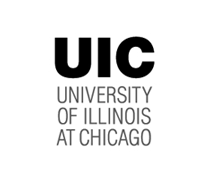A Clinical Study to Evaluate the KeraKlear Keratoprosthesis in Patients With Corneal Opacity
| Status: | Recruiting |
|---|---|
| Conditions: | Ocular |
| Therapuetic Areas: | Ophthalmology |
| Healthy: | No |
| Age Range: | 22 - 80 |
| Updated: | 3/1/2019 |
| Start Date: | March 22, 2018 |
| End Date: | December 30, 2020 |
| Contact: | Gretchen Neumann, M.S. |
| Email: | Gretchen@clinregconsulting.com |
| Phone: | 949-466-7124 |
A Prospective, Multicenter Clinical Trial Designed to Evaluate the Safety and Probable Benefit of the KeraKlear Non-Penetrating Keratoprosthesis in Subjects With Corneal Opacity With Poor Prognosis for Corneal Transplant
To evaluate the safety and probable benefit of the KeraKlear Non-Penetrating Keratoprosthesis
when implanted in an eye with corneal opacity that is at high risk of complications with PK.
when implanted in an eye with corneal opacity that is at high risk of complications with PK.
To evaluate the safety and probable benefit of the KeraKlear Non-Penetrating Keratoprosthesis
when implanted in an eye with corneal opacity that is at high risk of complications with PK.
A prospective, multicenter, clinical trial, designed to demonstrate the safety and
performance of the KeraKlear Non-Penetrating Keratoprosthesis.
when implanted in an eye with corneal opacity that is at high risk of complications with PK.
A prospective, multicenter, clinical trial, designed to demonstrate the safety and
performance of the KeraKlear Non-Penetrating Keratoprosthesis.
Inclusion Criteria:
- Corneal blindness where cornea transplantation is necessary but with a high risk of
graft failure due to
1. severe limbal stem cell deficiency (LSCD) associated with aniridia or
2. one full-thickness graft failure and at high risk of a failed second graft;
specifically, those who have either young recipient age (age less than 40 years),
a history of anterior segment surgery (in addition to prior PKP), and/or
pre-operative glaucoma or
3. multiple (two or more) failed cornea transplantation surgeries and spontaneous
visual improvement without surgical intervention is not expected or probable.
- Best Corrected Distance Visual Acuity (Snellen) which is equal or worse than 20/200 in
the study eye (but at least light perception with projection)
- Estimated visual potential of the study eye is greater than or equal to at least two
lines visual improvement of BCDVA of current vision in the study eye.
- Patient and/or caregiver willing and able to insert and remove bandage contact lens.
Exclusion Criteria:
- Visual Acuity of No Light Perception (NLP) in the study eye
- The patient is monocular or the non-study eye has Best Corrected Distance Visual
Acuity (Snellen) of worse than 20/160 due to an ocular condition other than severe
aniridic limbal stem cell deficiency or failed cornea transplantation surgery(ies).
- Suitable for standard PK with donor tissue in the study eye.
- History of severe dry eye syndrome or a Schirmer test with results of less than 3mm
after 5 minutes of testing with the use of topical anesthetic in either eye.
- Active or history of an auto-immune disease (e.g. Rheumatoid Arthritis, Ocular
Cicatricial Pemphigoid, Lupus, Steven's Johnson Syndrome, atopic keratoconjunctivitis,
etc.).
- On medications that may affect wound healing, such as antimetabolites or other
chemotherapeutic agents.
- History of posterior segment eye disease in either eye (including macular
degeneration, optic neuropathy, posterior uveitis) which is expected to limit the
visual improvement to less than two lines of vision.
- History of retinal surgery in the fellow eye (including retinal detachment repair,
intravitreal injection etc.).
- History of retinal surgery in the study eye (including retinal detachment repair,
intravitreal injection, etc.) unless the vision is at least light perception with
projection in four field quadrants and the macula is attached (if there is no view of
the retina, an ultrasound must show the macula is attached).
- History of uncontrolled glaucoma in either eye (IOP has been measured above 25 mmHg at
any time in the last 6 months).
- Current use of beta blocker eye drops (e.g. timolol, levobunolol, etc.).
- Vertical cup-to-disc (C:D) ratio greater than or equal to 0.8 in either eye (if able
to visible through corneal opacity). If not visible, patient is not to be excluded.
- Limited visual potential (patient does not have the ability to improve a minimum of
two lines of vision of BCDVA by history).
- History of amblyopia in the study eye limiting visual potential.
- If the patient has had a corneal transplant, corneal transplantation surgery was
performed less than 2 years ago.
- Anticipated need for surgery on the study eye during the course of the study
(including cataract surgery).
- Aphakia in the study eye.
- Active ocular infection in either eye.
- Hypotony in the study eye (IOP < 6mmHg).
- History of herpetic ocular infection in the study eye.
- Corneal thickness less than 400 microns in any region of the pachymetry map, i.e.
lamellar resection depth would be <100 microns from corneal endothelium accounting for the
optic height of the selected implant design (i.e. 300 microns for KeraKlear or 500 microns
for KeraKlear XT model).*.
- Inability to protect the operated eye from trauma.
- Females who are pregnant, lactating, or unwilling to use adequate birth control for t
the duration of the study.
- Patient is currently taking Sumatriptan (Imitrex) and unable to discontinue during the
study.
We found this trial at
5
sites
Boston, Massachusetts 02114
Principal Investigator: Roberto Pineda, M.D.
Phone: 617-573-6971
Click here to add this to my saved trials
2035 W Taylor St
Chicago, Illinois
Chicago, Illinois
(312) 996-4350

Principal Investigator: Jose de la Cruz, M.D.
Phone: 312-355-4866
University of Illinois at Chicago A major research university in the heart of one of...
Click here to add this to my saved trials
Durham, North Carolina 27710
Principal Investigator: Victor Perez, MD
Phone: 919-684-5769
Click here to add this to my saved trials
Click here to add this to my saved trials
Irvine, California 92697
949-824-5011

Principal Investigator: Marjan Farid, M.D.
Phone: 714-456-7090
University of California, Irvine Since 1965, the University of California, Irvine has combined the strengths...
Click here to add this to my saved trials